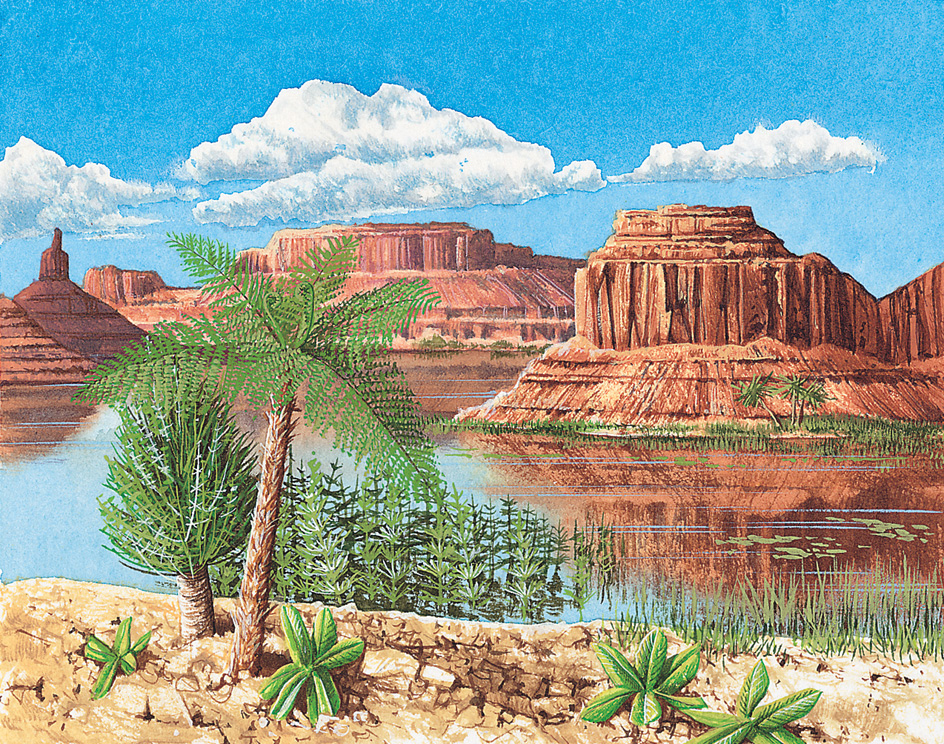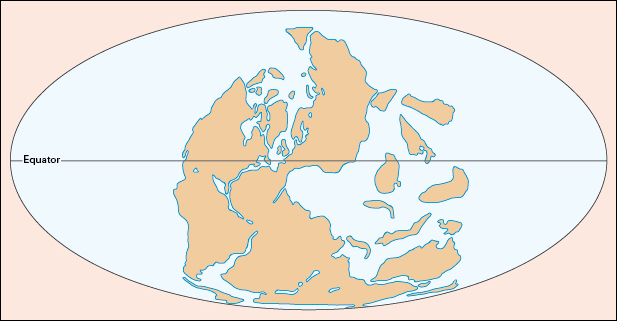Paleozoic Era is a segment of time in Earth’s history. It began 539 million years ago and ended 252 million years ago. The name comes from the Latin words meaning old life. During this time, some of the most important events in the early history of animal life occurred. Paleontologists (scientists who study prehistoric life) recognize that the beginning of the Paleozoic Era is marked by the first appearance of complex animal life and it ends with a major mass extinction in which vast numbers of species died out suddenly.

The Paleozoic Era is divided up into six periods of unequal length. From oldest to most recent, they are called the Cambrian, Ordovician, Silurian, Devonian, Carboniferous, and Permian. The Paleozoic Era was preceded by a segment of time called the Neoproterozoic Era, the last division of an even longer portion of early Earth history called the Proterozoic Eon. The oldest known fossils of simple animals date from the Ediacaran Period, the segment of time at the end of the Neoproterozoic Era, just before the Cambrian Period. The Paleozoic Era is followed by the Mesozoic Era, known as the age of dinosaurs.
The Paleozoic Era is marked by two major evolutionary events in the fossil record in which animal life rapidly diversified. The first event occurred during the Cambrian Period. Earth scientists often refer to this sudden, dramatic increase in the diversity of animal fossils as the Cambrian Explosion. During this time, fossils of distinctive groups of animals, including mollusks, arthropods, chordates, brachiopods, and echinoderms, first appear in the fossil record. During the Ordovician Radiation, which followed the Cambrian Explosion, the diversity of animal life again increased dramatically.
The Paleozoic Era was the time when life moved from the ocean to land. Scientists know from the fossil record that the first land plants evolved by the early Silurian Period. Evidence from rocks that formed during this time shows that levels of oxygen in the atmosphere were higher than any other time in Earth history. This high level of oxygen was caused by the great number of oxygen-producing plants growing on land. The first animals also moved onto land during the late Silurian. They included many arthropods, such as millipedes, mites, scorpions, and spiders. The first vertebrates (animals with backbones) appeared in the oceans of the early Paleozoic Era. By the end of the Devonian Period, vertebrates had begun to move onto land.
During the Paleozoic Era, Earth’s continents were in different locations than they are today. What is now North America was located on the equator for much of the Paleozoic Era. South America, Africa, Antarctica, Australia, and India were all combined into a large landmass that Earth scientists call Gondwana. During the late Paleozoic Era, Gondwana began to collide with the rest of Earth’s landmasses to form a supercontinent called Pangaea (also spelled Pangea). Surrounding Pangaea was a worldwide ocean called Panthalassa.

The Paleozoic Era is also marked by three major mass extinction events. One mass extinction event occurred at the end of the Ordovician Period, and another marks the end of the Devonian Period. However, the mass extinction that occurred at the end of the Permian Period was by far the worst extinction event in Earth history. Paleontologists estimate that about 95 percent of species that lived during the Paleozoic Era became extinct, including most life in the oceans. Most scientists believe that massive volcanic eruptions occurring in what is now Siberia caused the mass extinction that marks the end of the Paleozoic Era.
